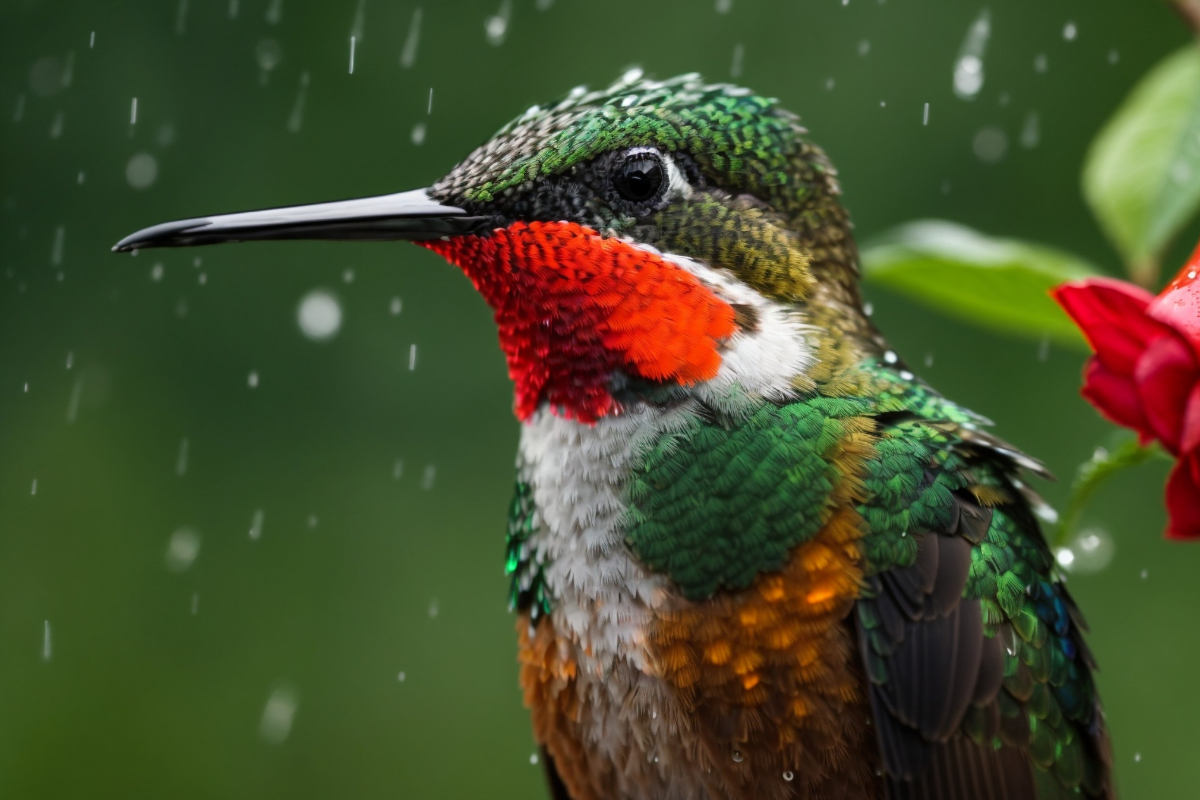During the summer months, it is a common sight to see hummingbirds flying around flowers in search of nectar. These tiny birds are known for their fast and agile flight, making them a joy to watch. However, what happens to hummingbirds when it starts to rain? As a hummingbird enthusiast, I was curious to find out where these birds seek shelter during summer rainstorms. In this blog post, we will explore the answer to this question and more.
Where Do Hummingbirds Go When It Rains?
When it rains, hummingbirds seek shelter under thick trees, shrubs, and broad-leafed branches. They may also find refuge under the eaves of buildings or inside open garages. During heavy rainfall, they perch in sheltered spots, conserving energy until the rain subsides. Seeking shelter helps them stay dry and maintain their body heat.
Why Hummingbirds Need to Take Shelter in Bad Weather
Hummingbirds are vulnerable to getting soaked in the rain due to their small size and lightweight bodies. When their feathers get wet, it affects their ability to regulate body temperature and increases the energy required for flight. With their high metabolisms, hummingbirds need to consume a significant amount of nectar each day to survive. If rain prevents them from accessing food sources, they can quickly become hypothermic and starve. Taking shelter during bad weather is crucial for their survival.
The Different Places They Go to Stay Dry
Hummingbirds seek shelter in various locations to stay dry during rainstorms. Thick trees and shrubs provide natural cover, while the eaves of buildings and open garages offer additional refuge. They may also find temporary shelter under the leaves of buildings, patios, or porches. While garages and sheds are not ideal long-term solutions, they can provide life-saving emergency shelter when storms strike suddenly.
How Rain Impacts Their Behavior and Survival
Rainfall triggers behavioral changes in hummingbirds to conserve energy. When it’s raining steadily, they tend to remain perched in one spot, reducing their flight activities. Their metabolism and body temperature drop, and they enter a temporary state of torpor. Hummingbirds also stop feeding during heavy rain. Once the rain subsides, they become active again and resume their regular feeding and behaviors.
If All Species React the Same Way to Storms
Not all hummingbird species react in the same way to rain. Tropical hummingbirds, accustomed to intermittent and brief rainfall, may shelter momentarily before resuming normal behaviors. However, temperate hummingbirds that breed in areas with long rainy periods have adapted to handle extended bad weather.
